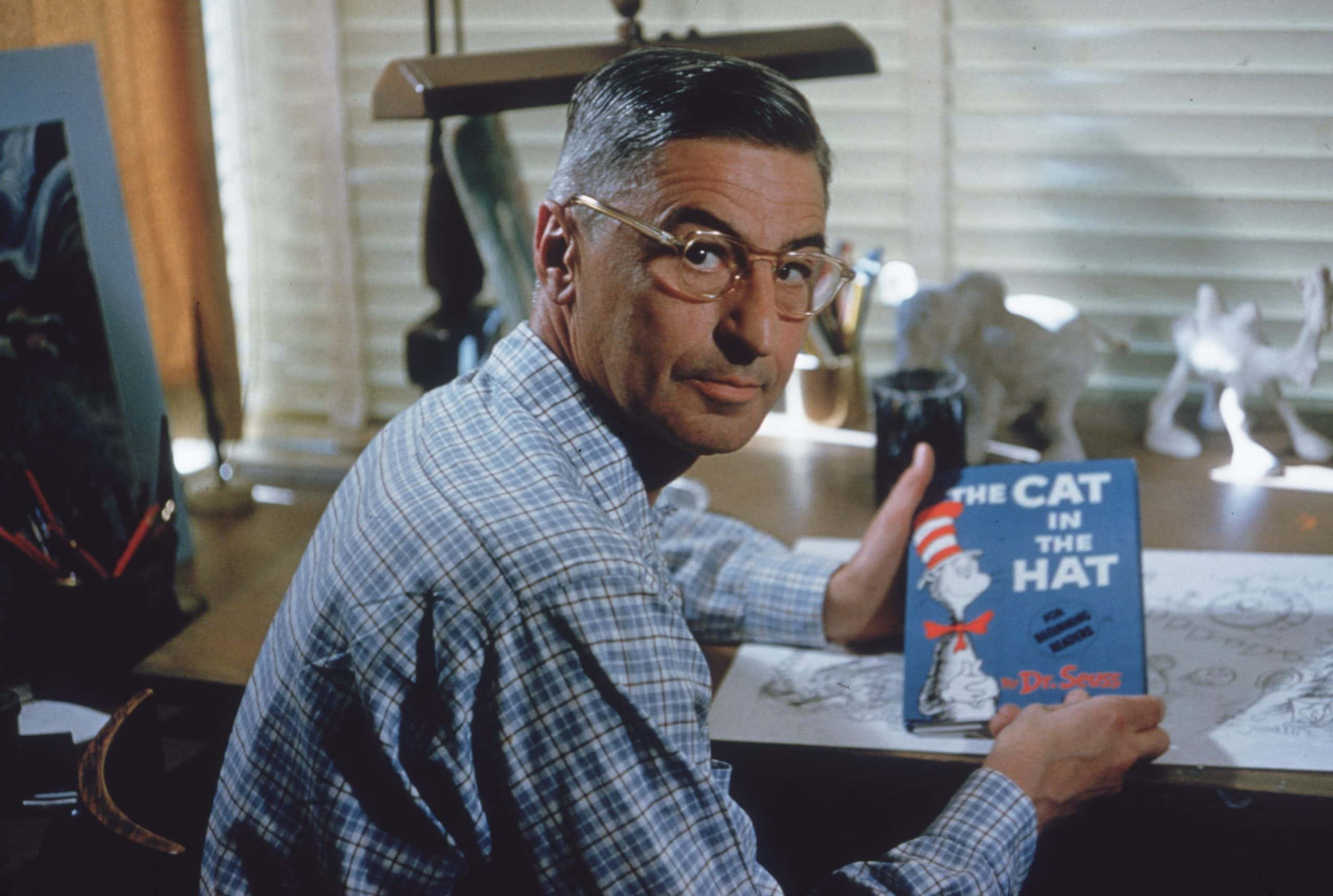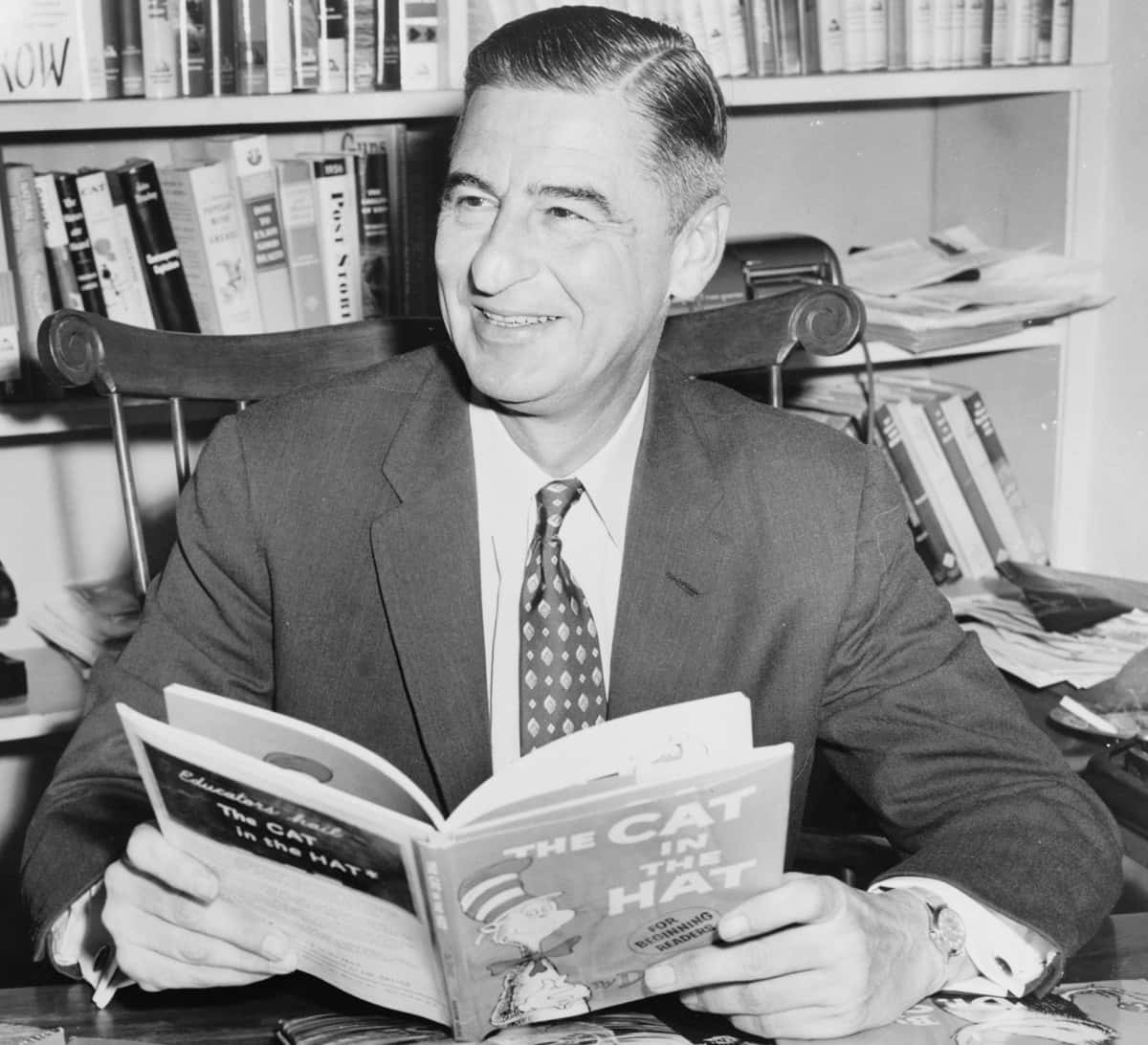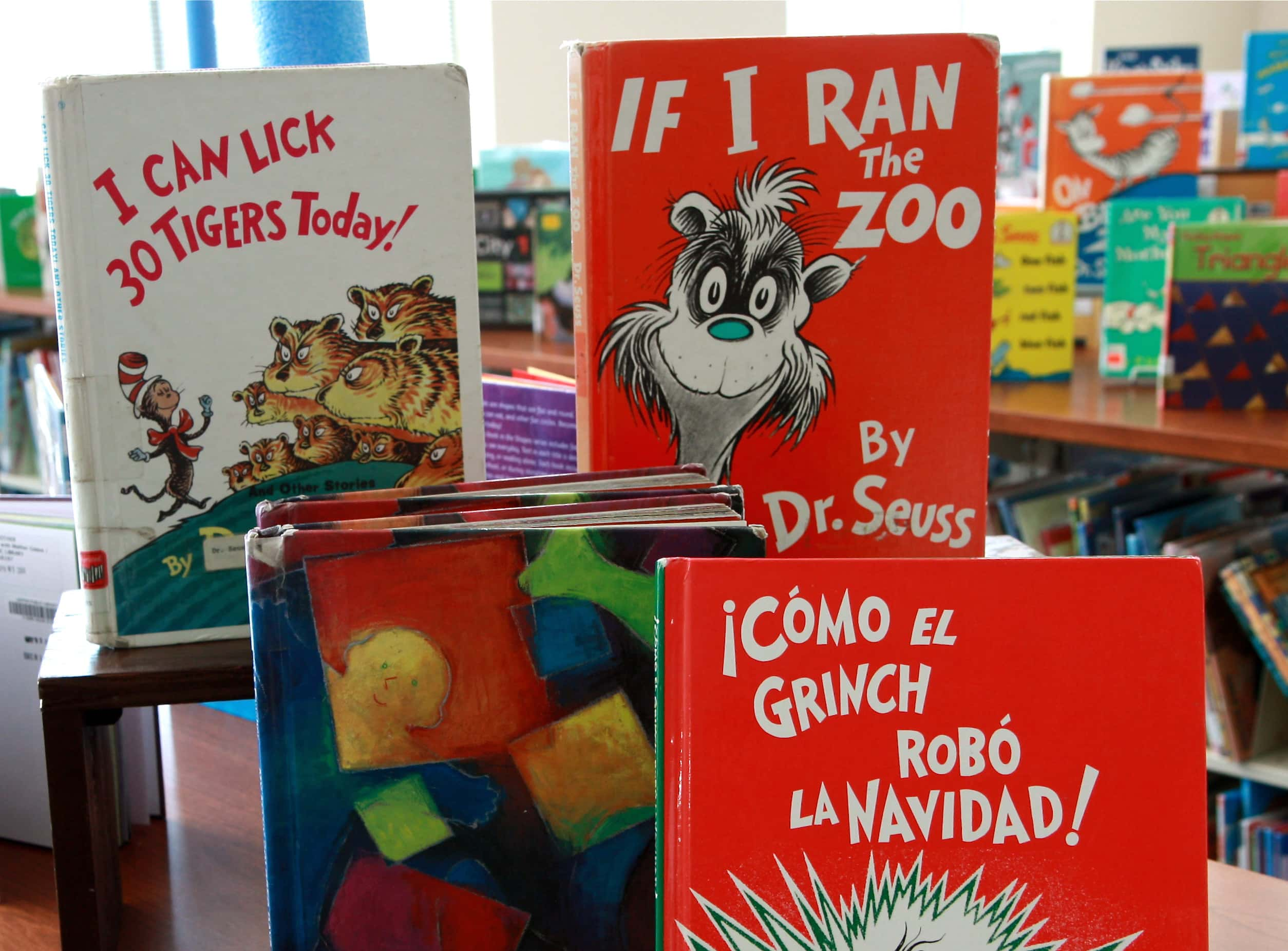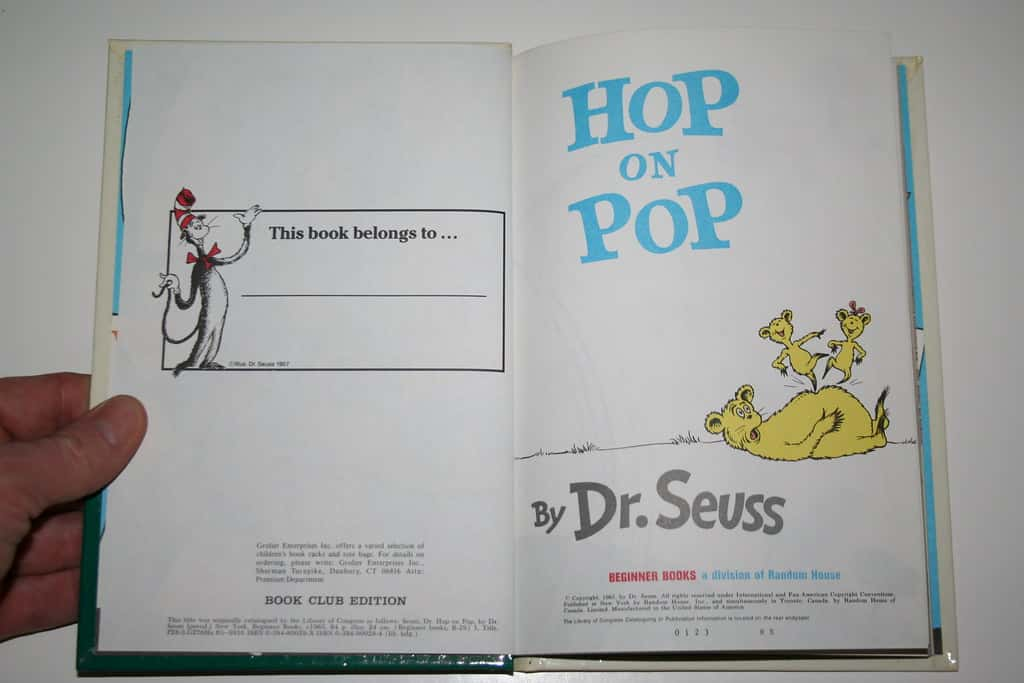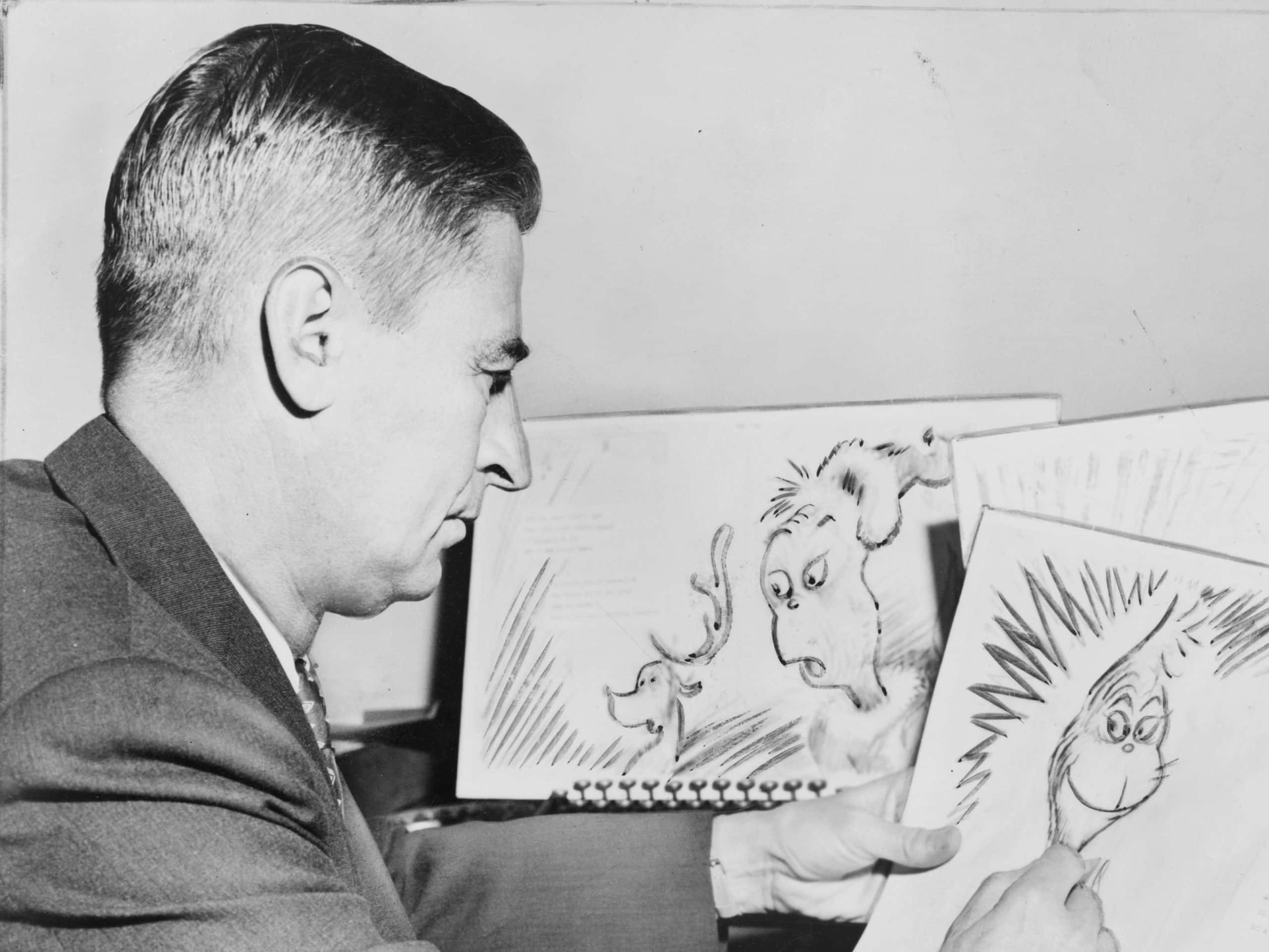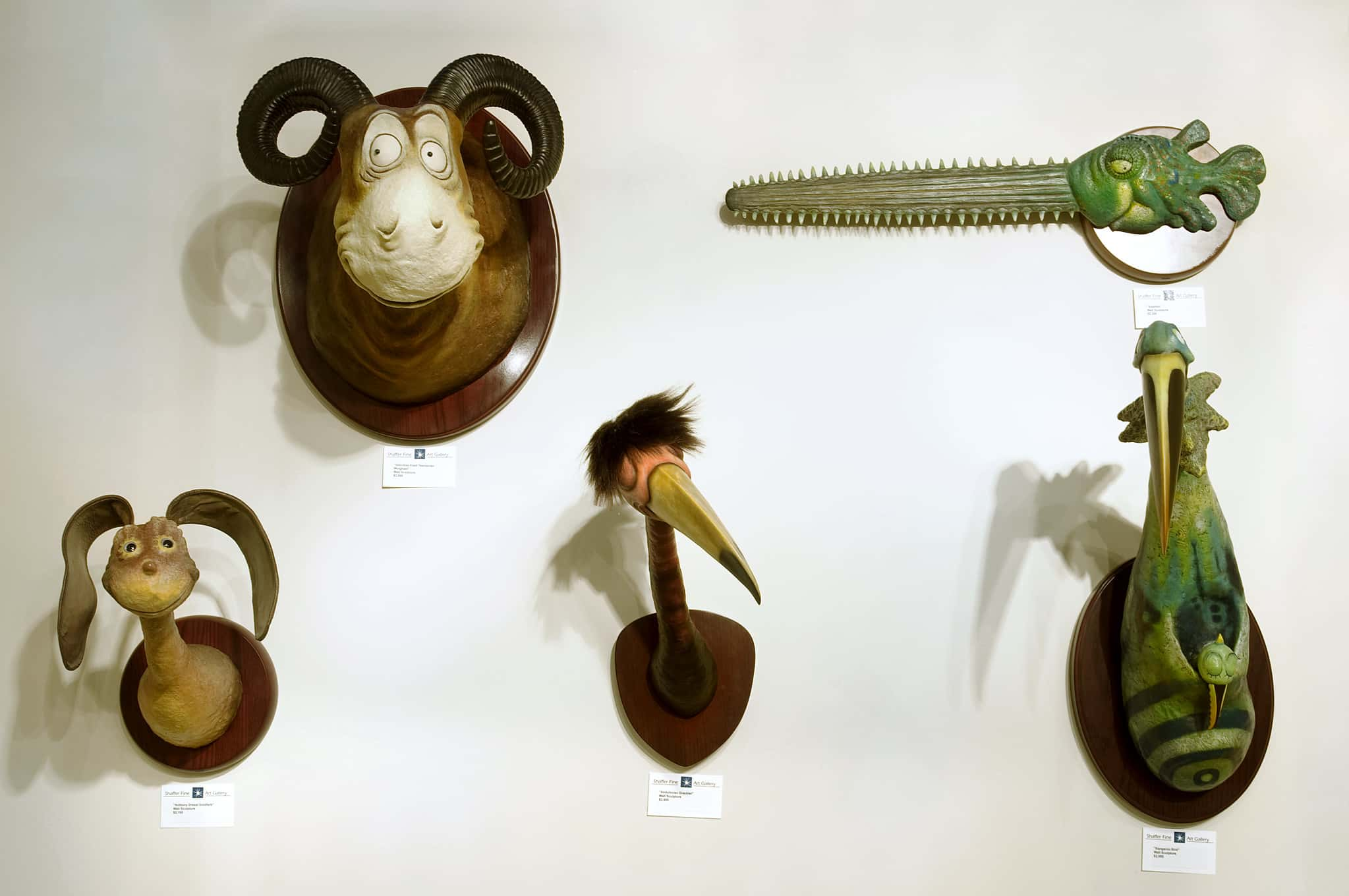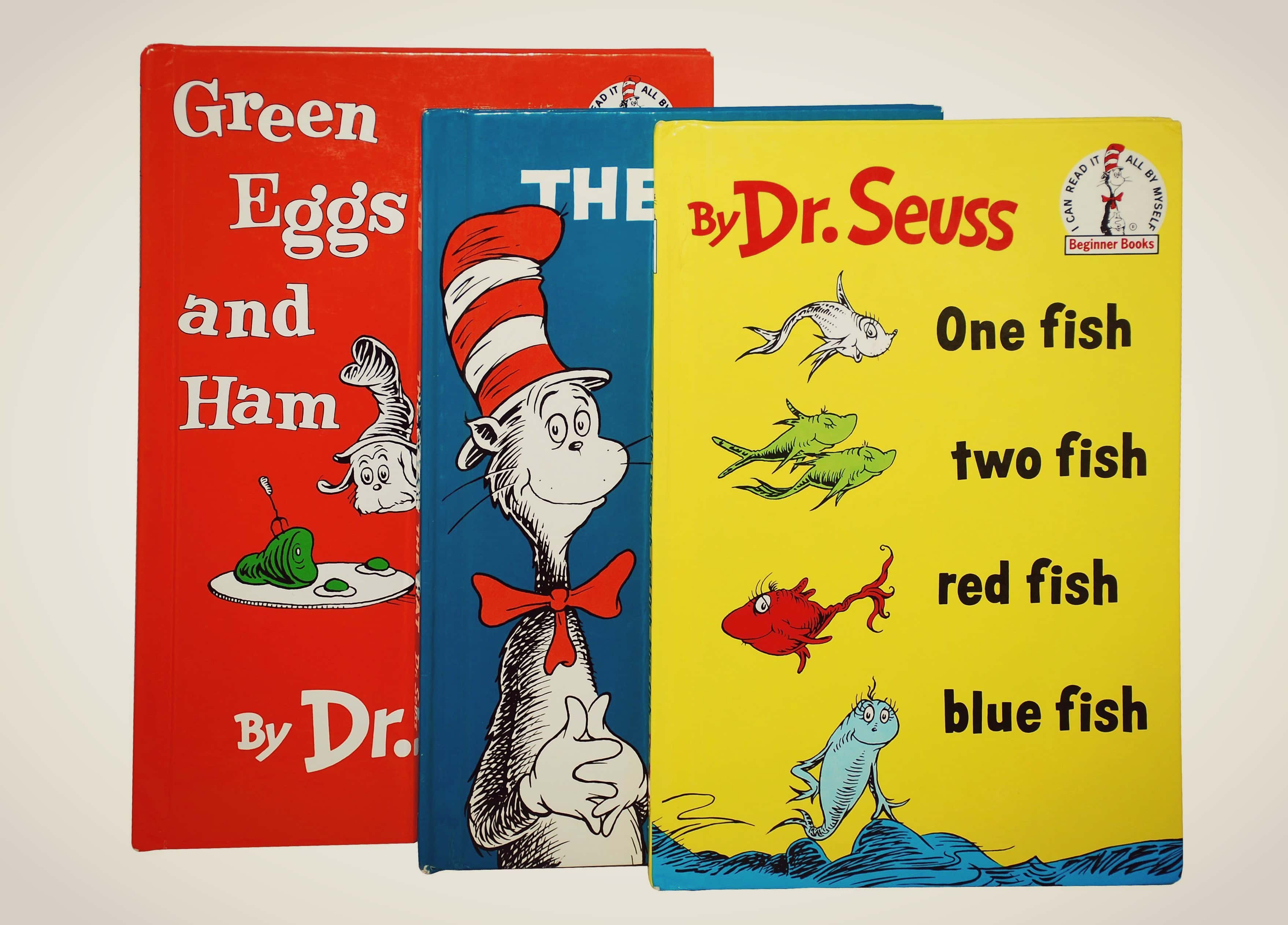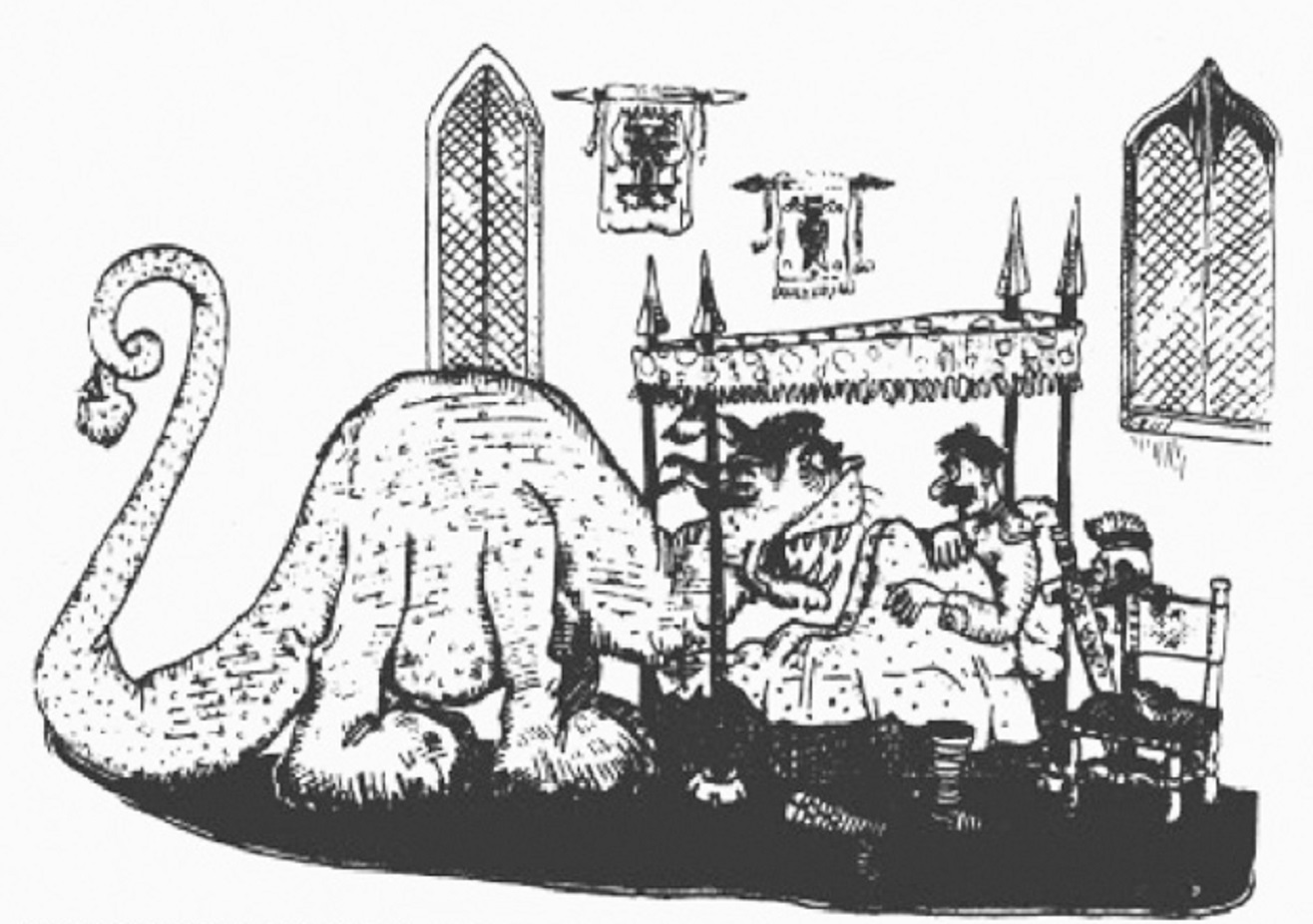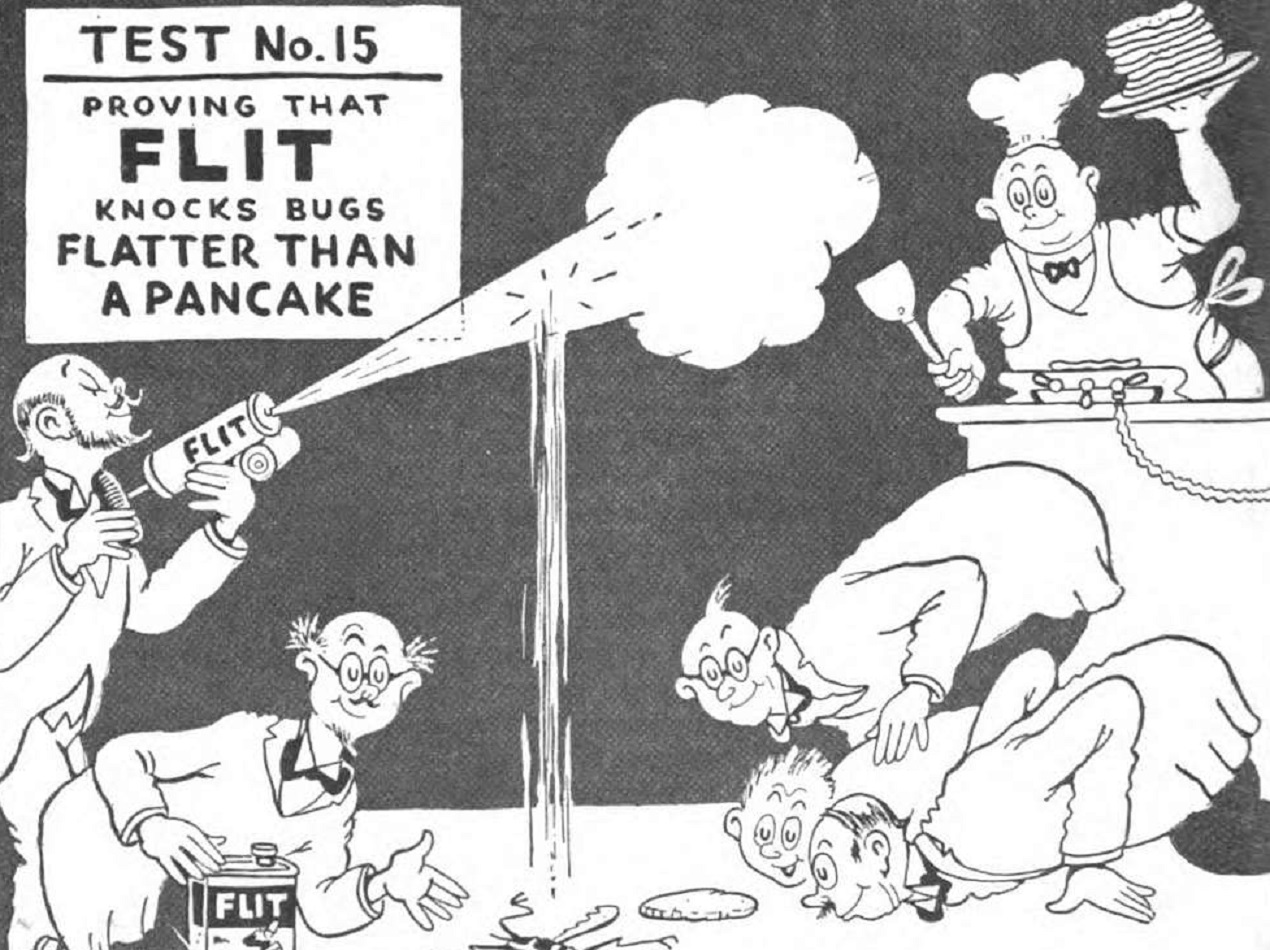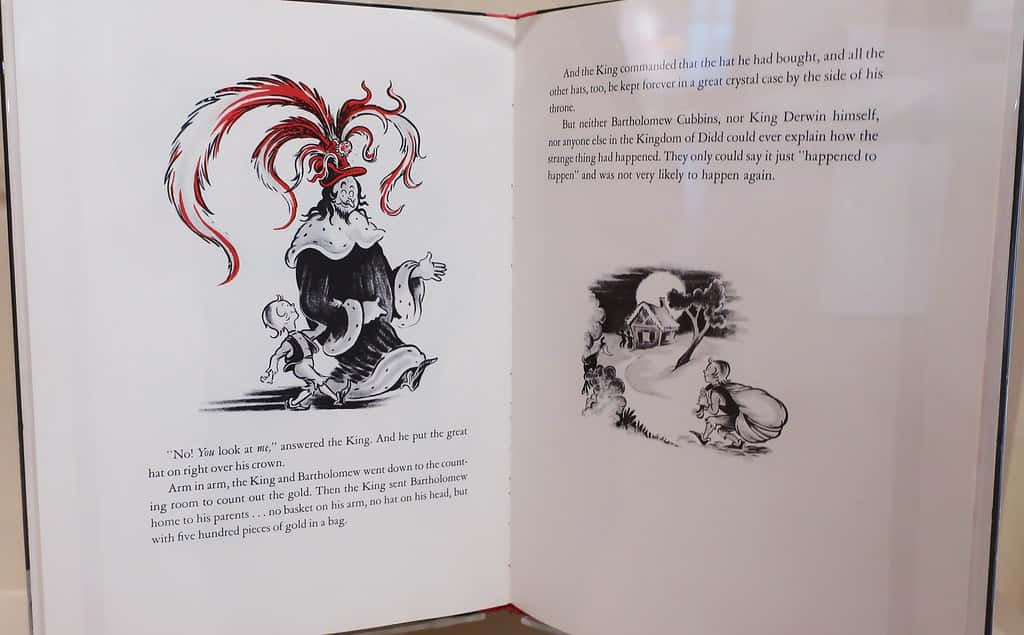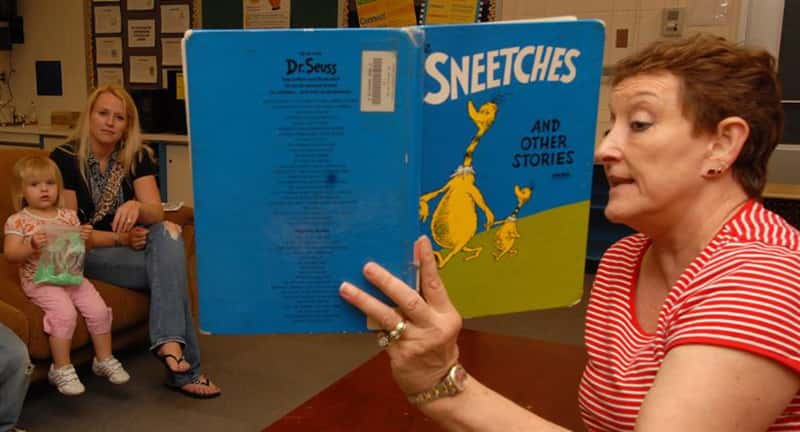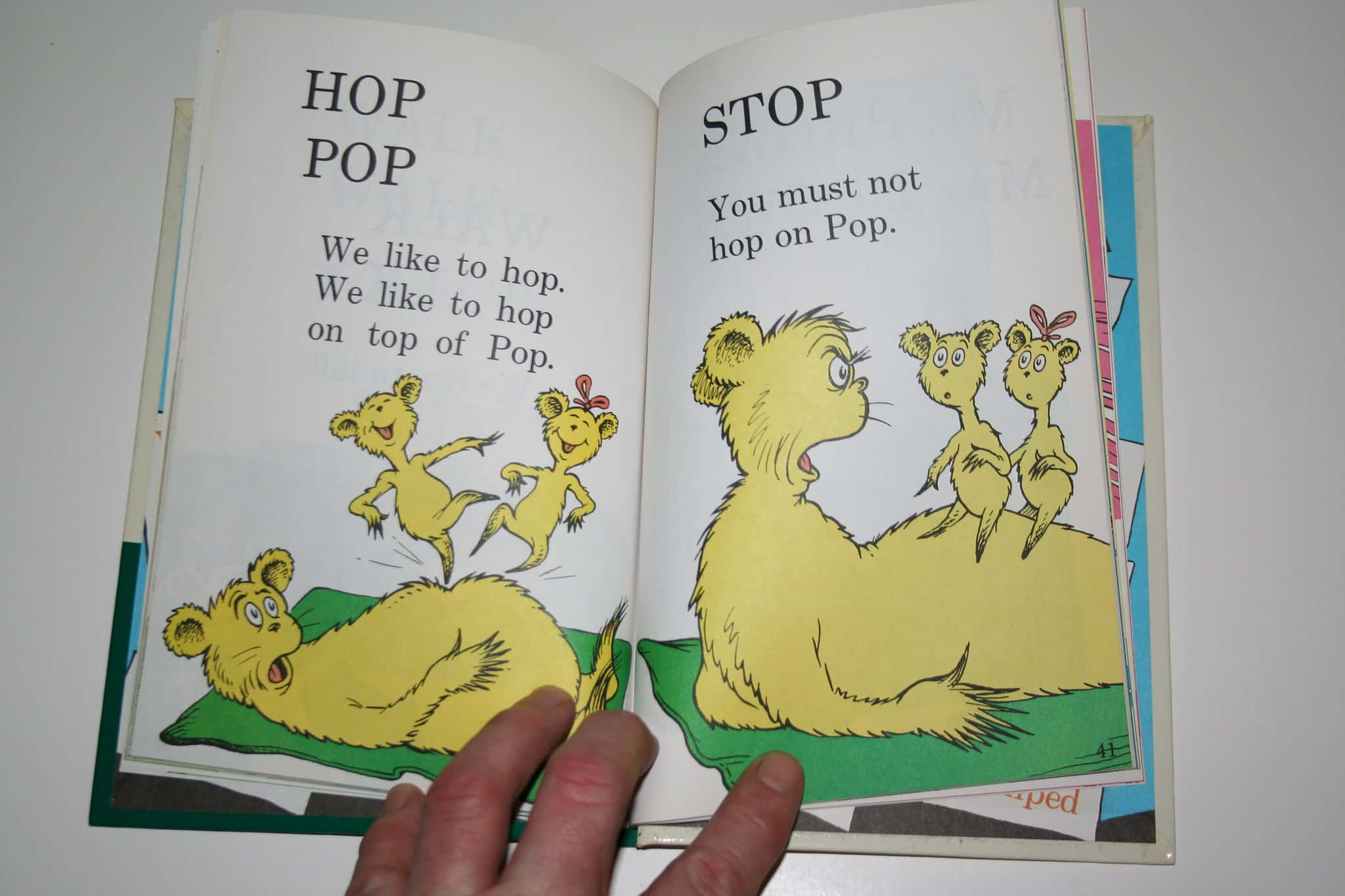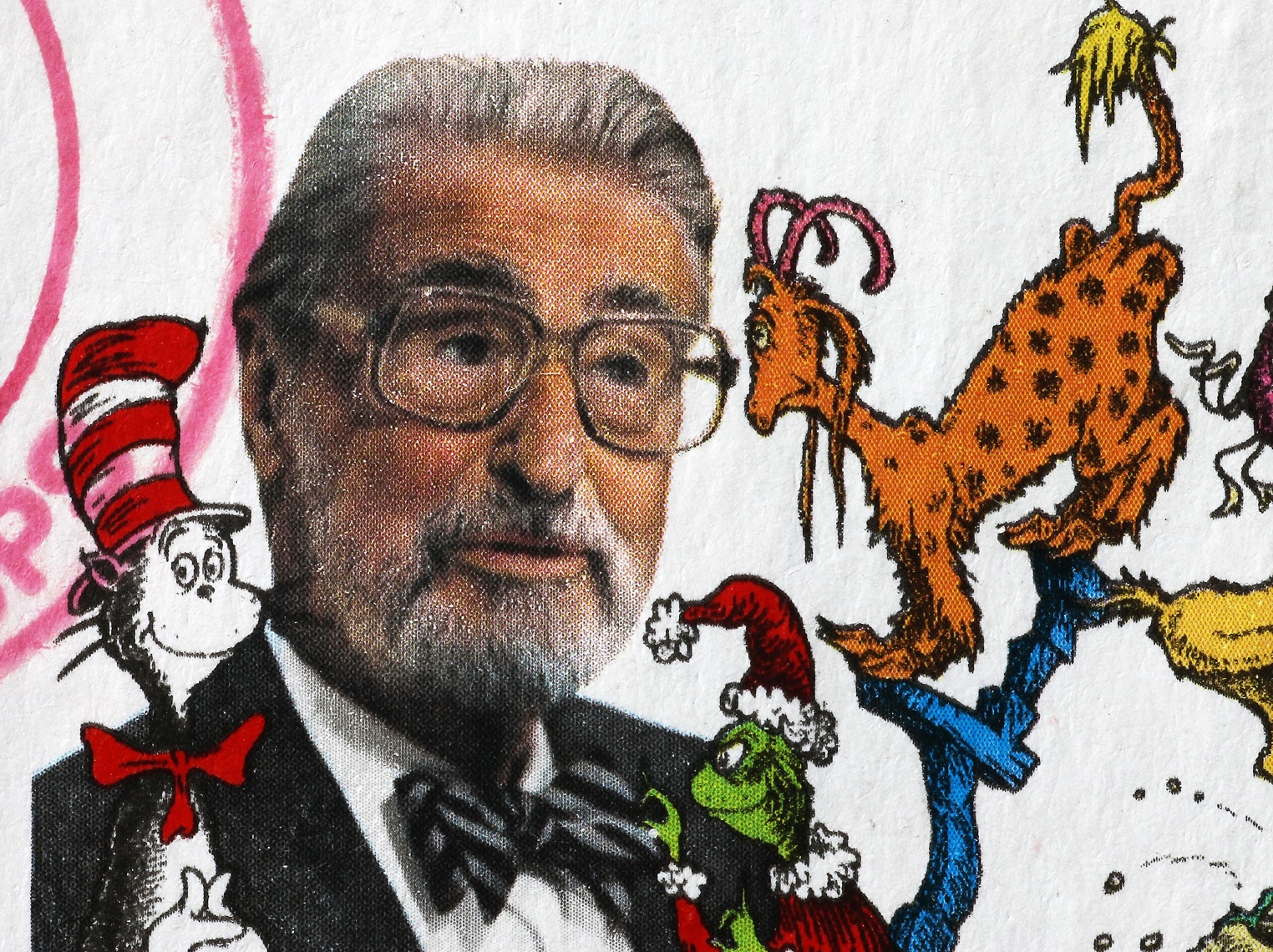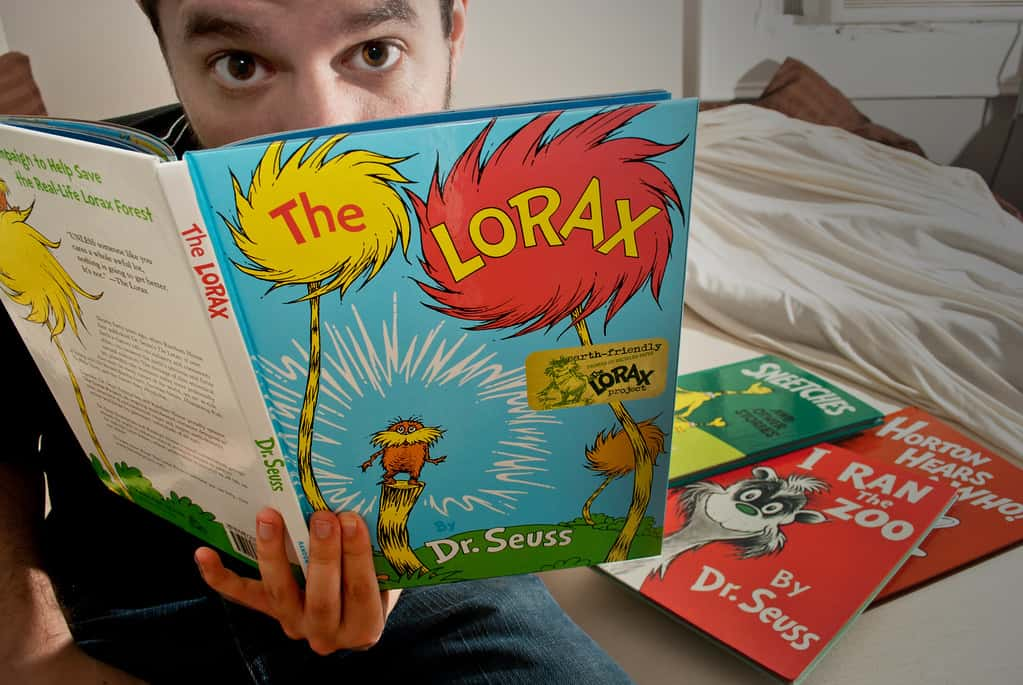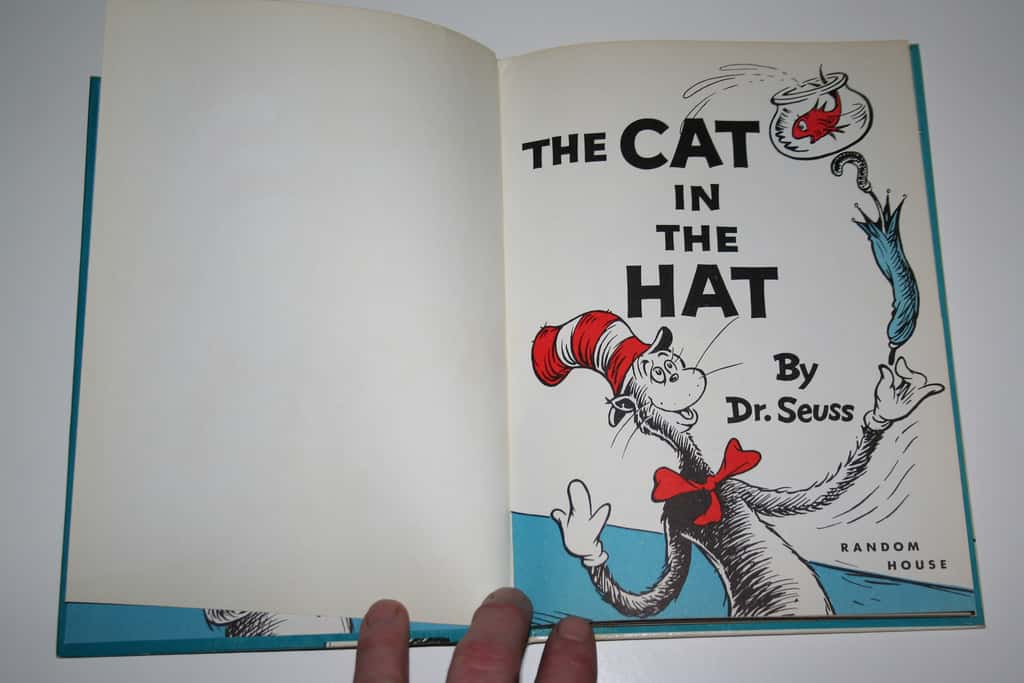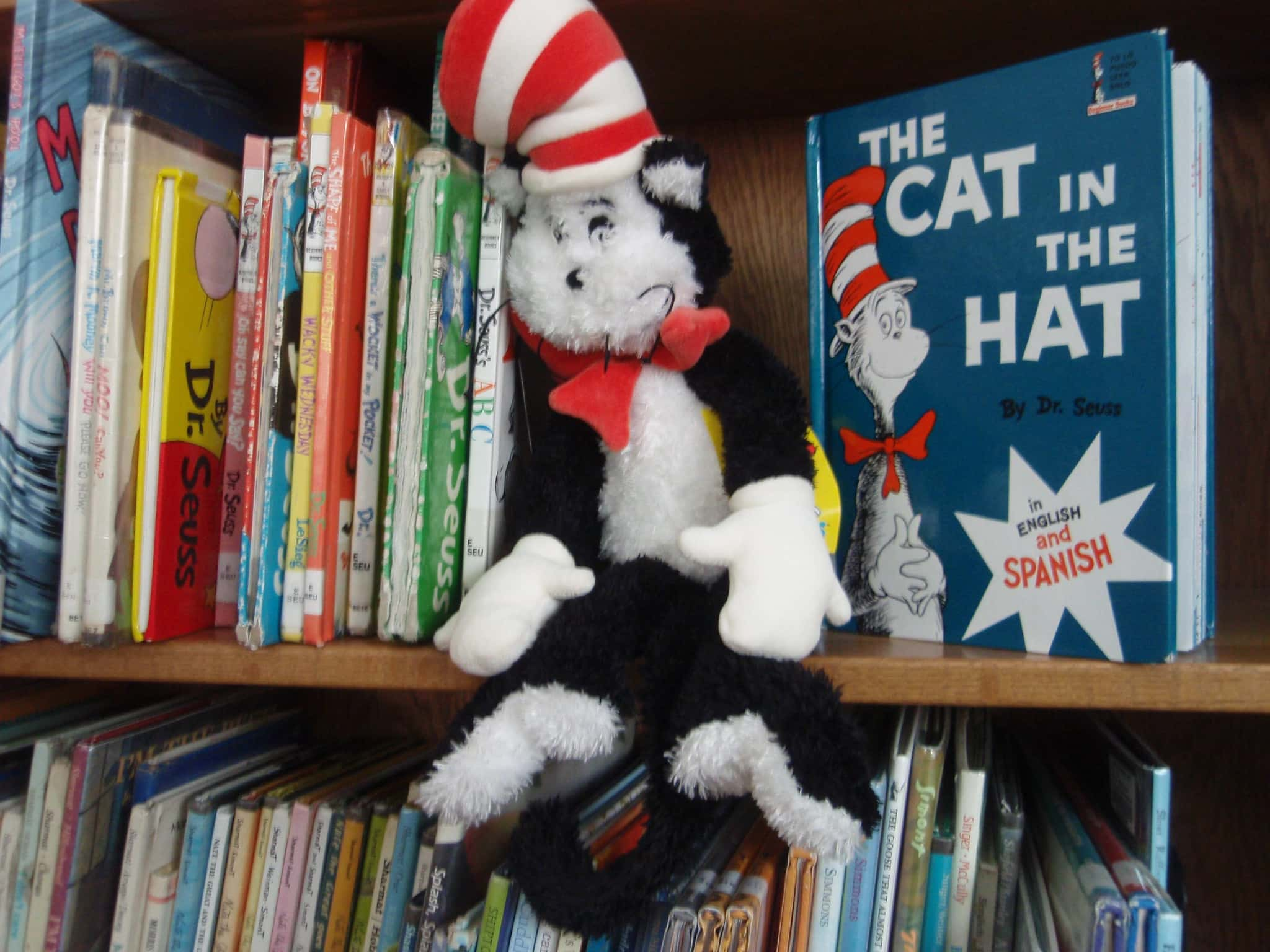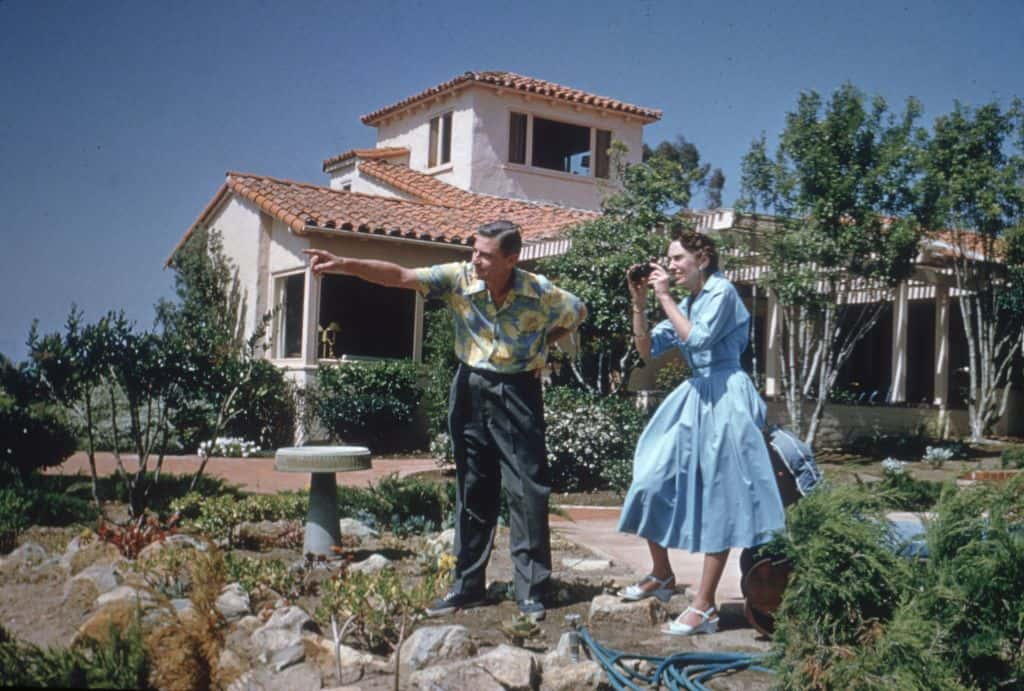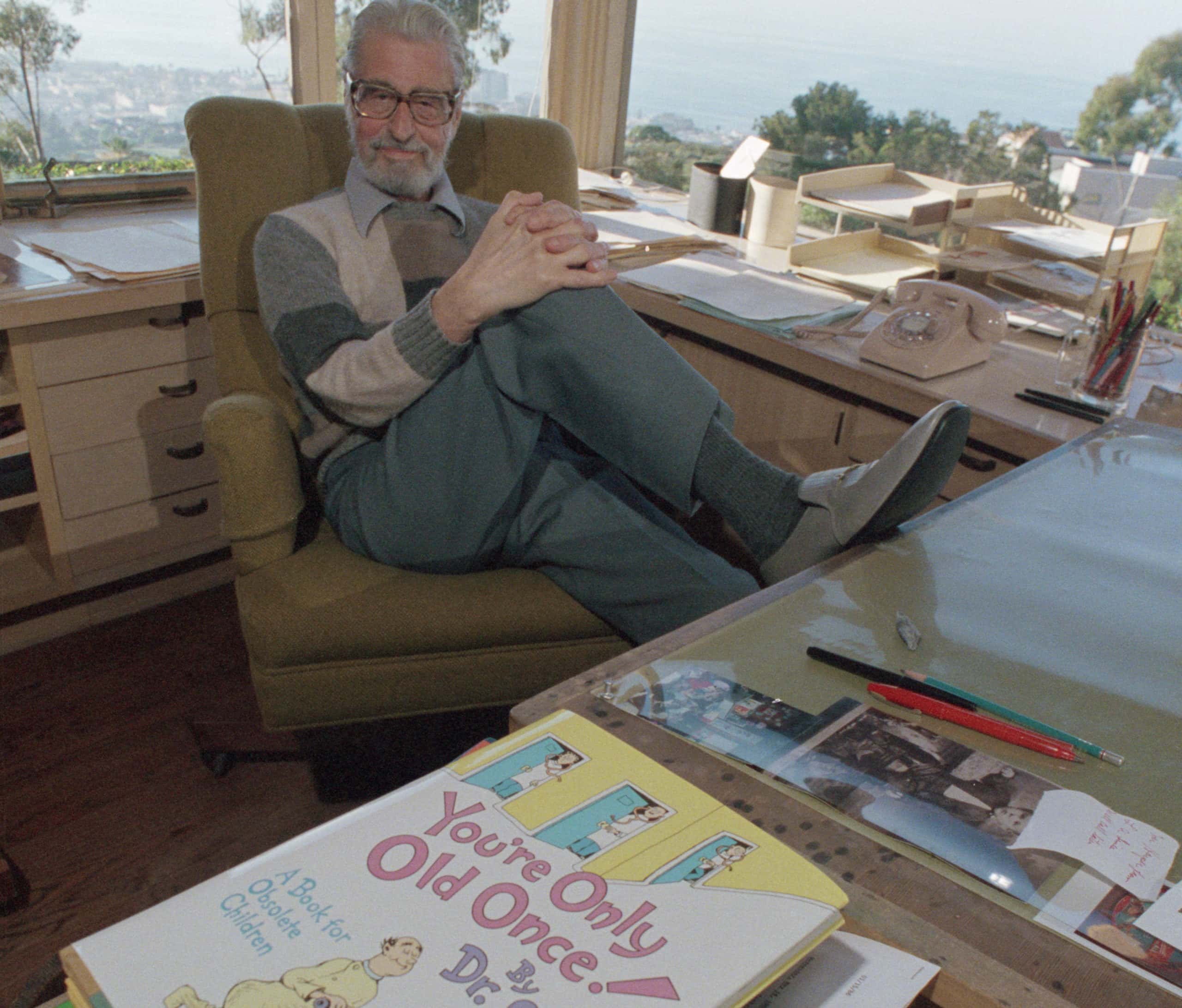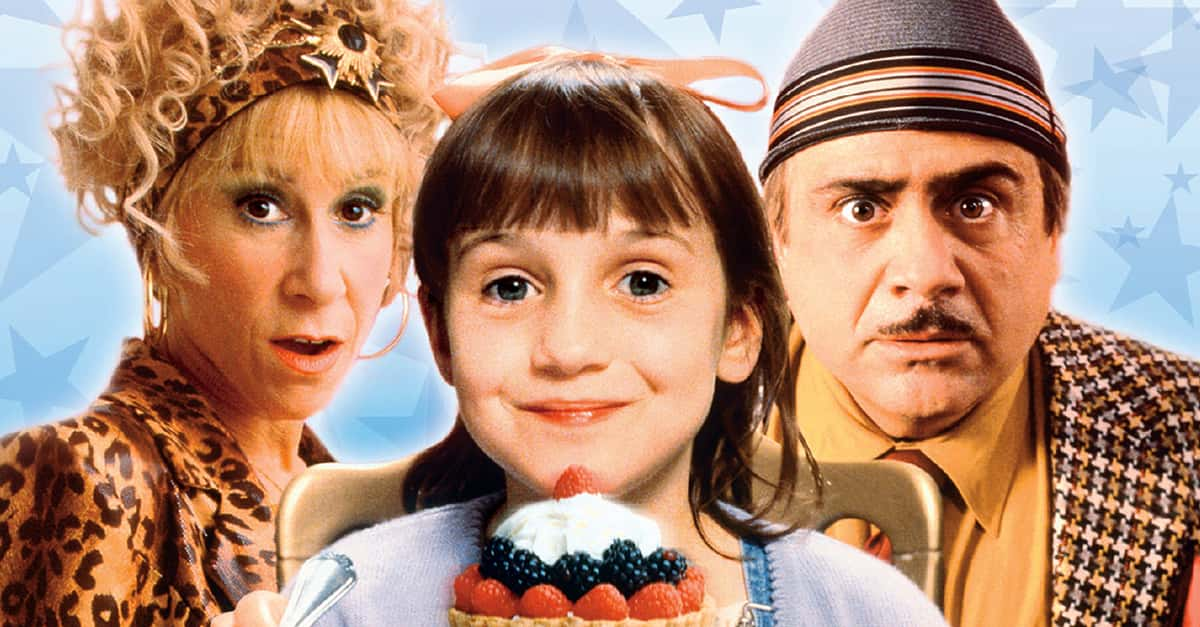We wouldn't have the Dr. Seuss that we know and love if first wife Helen hadn't seen talent in him and pushed him to become an author. He owed his career to her—and that makes what he did to her so much more cruel.
1. His Life Has A Dark Secret
Dr. Seuss’s works have delighted millions all over the world, but his life is no story for children. From his rebellious youth to his wife’s shocking end, you’ll definitely find Dr. Seuss’s biography in the “Adult Section”.
2. His Family Were Brewers
Theodore Robert Geisel Jr. was born and raised in Springfield, Massachusetts. The family owned a brewery, so little Teddy got to enjoy a nice, stable upbringing—until Prohibition put an end to their business. Luckily, Theodore Sr. had friends in high places, so he landed on his feet.
But while the family had some friends, they definitely had enemies as well.
3. He Faced Prejudice
While Seuss would later fondly recall his hometown in later books—he grew up near the now-iconic Mulberry Street—it wasn’t all happy memories in Springfield. At the outbreak of WWI, the Geisel kids faced severe anti-German prejudice from the other children at school.
Seuss persevered through the torment, eventually graduating and enrolling at Dartmouth, and that’s where he started getting into trouble.
4. He Was A Social Butterfly
Ted Geisel fit right in at Dartmouth. He quickly joined the Sigma Phi Epsilon fraternity and started writing for the school’s humor magazine, the Dartmouth Jack-O-Lantern. He rose through the ranks at the magazine, and pretty soon he became the editor-in-chief.
It looks like his career was on the fast-track—and then a single mistake almost blew it all apart.
5. He Liked To Party
Between the fraternity and the magazine, it’s clear that Dr. Seuss was quite…social, in college. And what do social college students do? Drink, of course! Now, students get caught drinking in universities all the time. It’s not usually that big of a deal.
But you’re forgetting one thing: Dr. Seuss went to school during Prohibition.
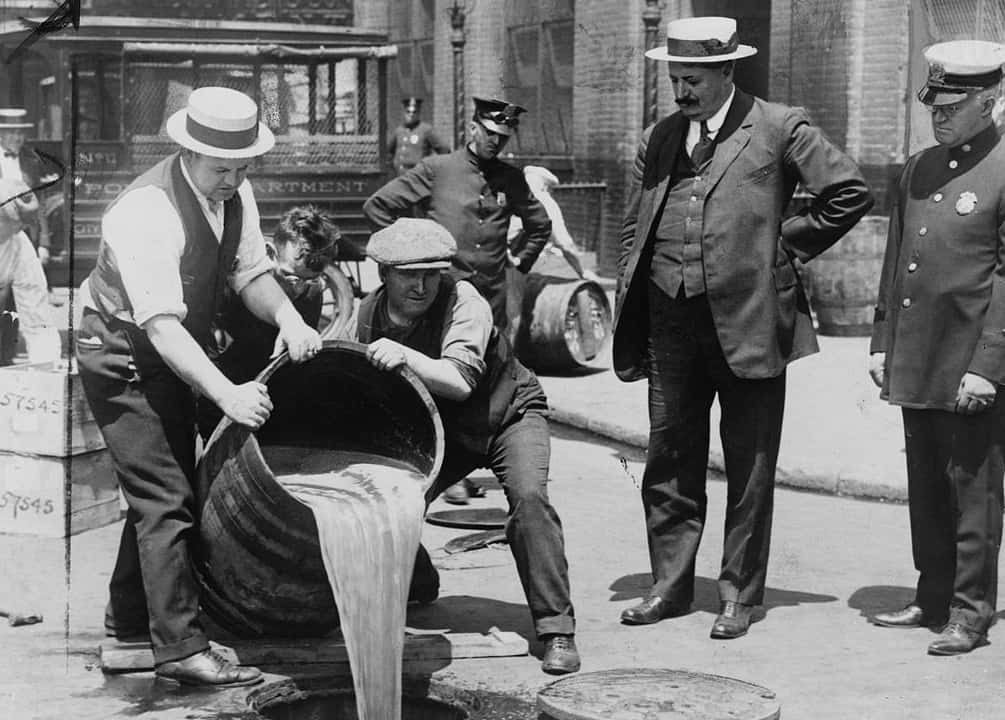 Wikimedia Commons
Wikimedia Commons
6. He Got Caught
One night at Dartmouth, school authorities busted into Dr. Seuss’s room. They found the dorm crowded, with Seuss and nine of his friends sitting around drinking gin. During prohibition. A simple slap on the wrist wasn’t going to cut it.
To punish young Ted Geisel, the Dean had to do something drastic.
7. They Wanted To Kick Him Out
The Dean wanted to expel Seuss, but he offered the young writer a life raft: He could stay at the school, but he had to resign from all extracurricular activities. All that time rising to editor-in-chief of the Dartmouth Jack-O-Lantern, and just like that, he was being forced to quit.
But Ted Geisel wasn’t going to go quietly. He was going to keep writing for the Jack-O-Lantern—and he knew just how he was going to do it.
8. He Hid Who He Was
Ted Geisel’s byline was no longer appearing anywhere in the Dartmouth Jack-O-Lantern, but devoted readers probably would have noticed that some of the writing had Geisel’s familiar flair. But instead of his name at the bottom, they’d find just a single, enigmatic word: Seuss.
Ted Geisel never looked back.
9. He Went To Oxford
It sounds like Dr. Seuss had a great time at college, so it’s no surprise that he wanted to stay in school. After Dartmouth, Seuss enrolled at Oxford, hoping to get a PhD in English. Fate had other ideas for him.
As I’m sure he hoped, going to Oxford would indeed change the course of his life forever—but it wasn’t going to happen the way he expected.

Sign up to our newsletter.
History’s most fascinating stories and darkest secrets, delivered to your inbox daily. Making distraction rewarding since 2017.
10. He Met Someone Special
It must have been overwhelming moving to England and attending Oxford, so meeting a pretty young girl from New York must have been just what the doctor ordered for Ted Geisel. Her name was Helen Palmer, and she immediately saw something in Theodore Geisel.
And it wasn’t just his looks.
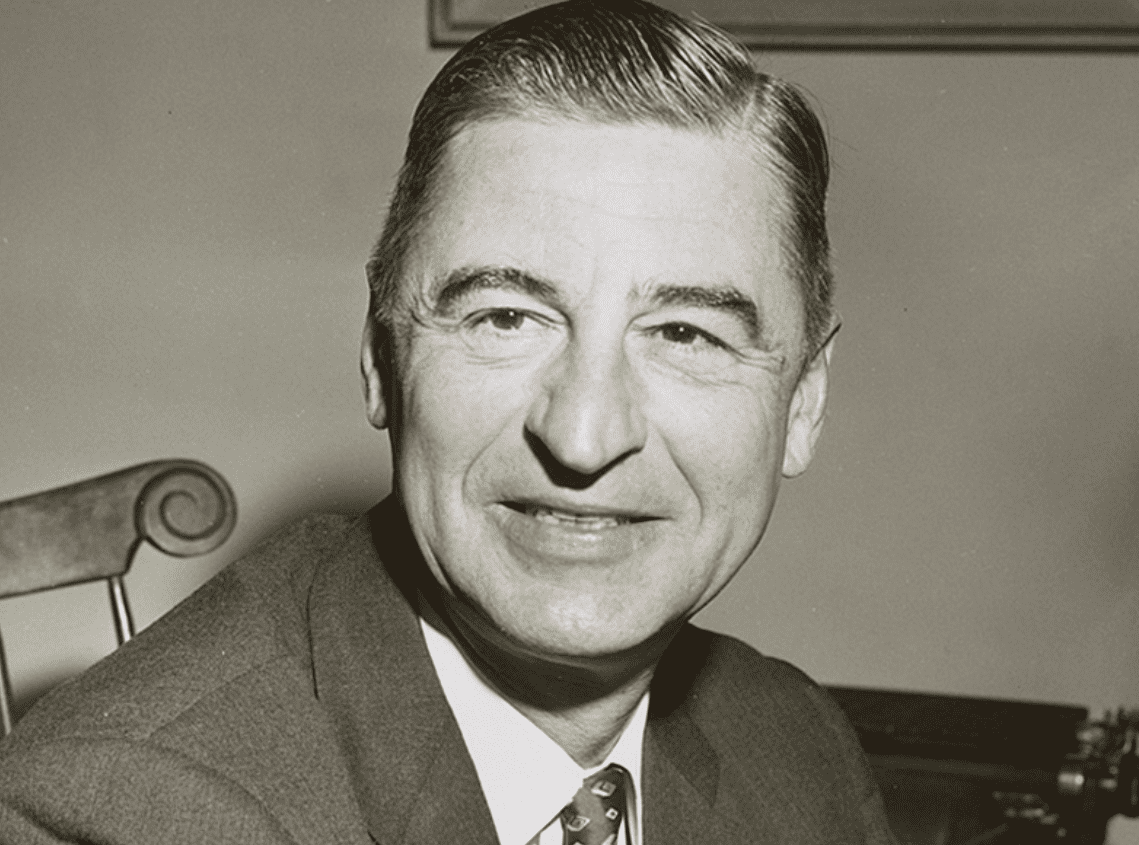 Wikimedia Commons
Wikimedia Commons
11. She Saw His Talent
Before meeting Helen Palmer, Dr. Seuss was planning on using his artistic talents to become an English teacher. He wanted to make a difference in young people’s lives. But when Helen Palmer took one look at his notebooks, she knew he was destined for something more.
12. He Drew Fabulous Animals
Helen couldn’t believe the "fabulous animals" that her new beau had been drawing in the pages of his notebook. She later recalled thinking, “Here was a man who could draw such pictures; he should be earning a living doing that”.
There was just one problem: Theodore Geisel already had his life figured out. But Helen wasn’t going to let it go.
13. He Gave It A Go
In the early days of their romance, Helen had a secret motive: Ted Geisel had plans to become a teacher, but she was going to make sure that the world saw his drawings. In 1927, with Helen’s convincing, Seuss dropped out of Oxford, moved back to the States, and started trying to make it as an author in earnest.
Helen Palmer put Dr. Seuss on the path to fame and fortune—and her faith in him paid off quick.
14. It Paid Off Right Away
The moment Seuss got back to the US, he started sending his writings and drawings to magazines, publishers, and advertisers—basically, anyone who was buying. By July of that year, he already had a nationally published cartoon under his belt.
The Saturday Evening Post paid him $25 for his work, and that alone was enough to convince him to move to New York City and do this thing for real.
15. He Got A Job
Dr. Seuss went from strength to strength. By October, he had landed a great job as a writer and illustrator for the humor magazine Judge. He wasn’t rich and famous yet, but he had steady paychecks coming in. With a little bit of stability, he popped the question, and he and Helen tied the knot in 1927.
If she’d known how it was going to end, would she have gone through with it?
 Various, Wikimedia Commons
Various, Wikimedia Commons
16. He Became A Doctor (Kind Of)
With a steady job and his new wife on his arm, it seemed like Ted Geisel had it all figured out. There was just one thing missing: He still signed his work with the mononym “Seuss,” and it just had something missing.
So, because his dad had always wanted him to go into medicine, Ted Geisel decided to start calling himself “Dr. Seuss" in the pages of Judge, and the rest is history.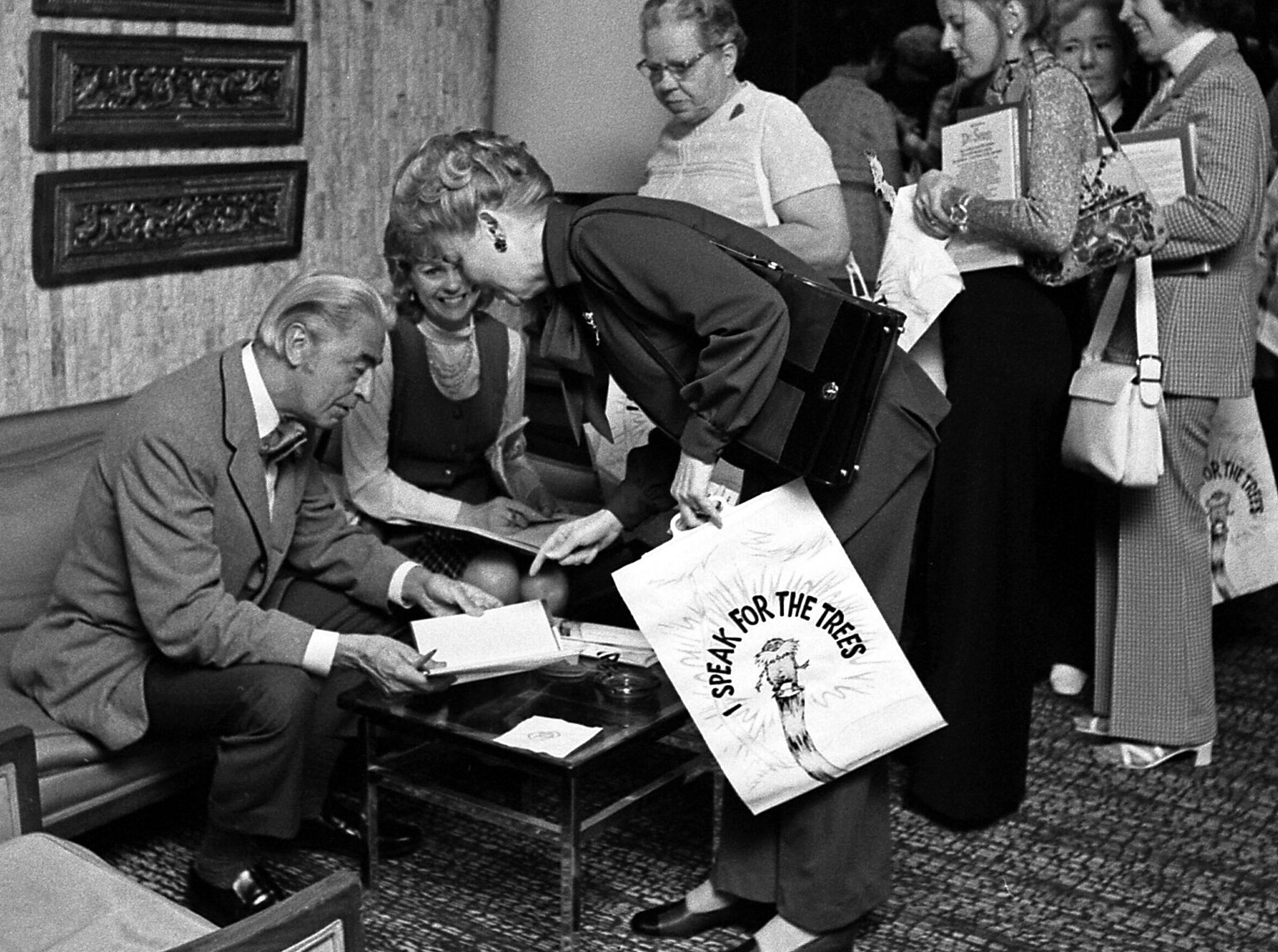 Larry Bessel, CC BY 4.0, Wikimedia Commons
Larry Bessel, CC BY 4.0, Wikimedia Commons
17. He Was An Ad Man
Judge was a steady paycheck, but it wasn’t what got Dr. Seuss noticed. That, weirdly enough, was bug spray. One of Seuss’s early Judge cartoons mentioned the popular bug spray brand Flit.
One woman who enjoyed the cartoon also happened to be married to the executive in charge of advertising for Flit. That was very good news for one Dr. Seuss.
18. He Created An Iconic Catchphrase
Dr. Seuss’s first Flit advertisement appeared in early 1928, and that gravy train continued until 1941. People loved the ads, and the catchphrase “Quick, Henry, the Flit!” quickly became the “I’m lovin’ it!” of its day.
So, in a bizarre twist of fate, a bug spray ad turned Dr. Seuss into one of the most sought-after artists in the US.
19. They Moved Up In The World
Helen Palmer (now Geisel) clearly had a good eye for talent: Telling Seuss to quit Oxford and bet on himself paid off huge, and the money was now rolling in. She and Seuss moved into a nice new place in NYC, and they were ready to start living the high life.
20. They Travelled The Globe
Fame and fortune meant that Seuss and his wife got to travel the world. Seuss never kept regular office hours, with his success giving him the freedom to go wherever he wanted, whenever he wanted. Without any children, he and Helen were able to visit 30 countries together by 1936.
They seemed like the perfect couple—but it wouldn't last forever.
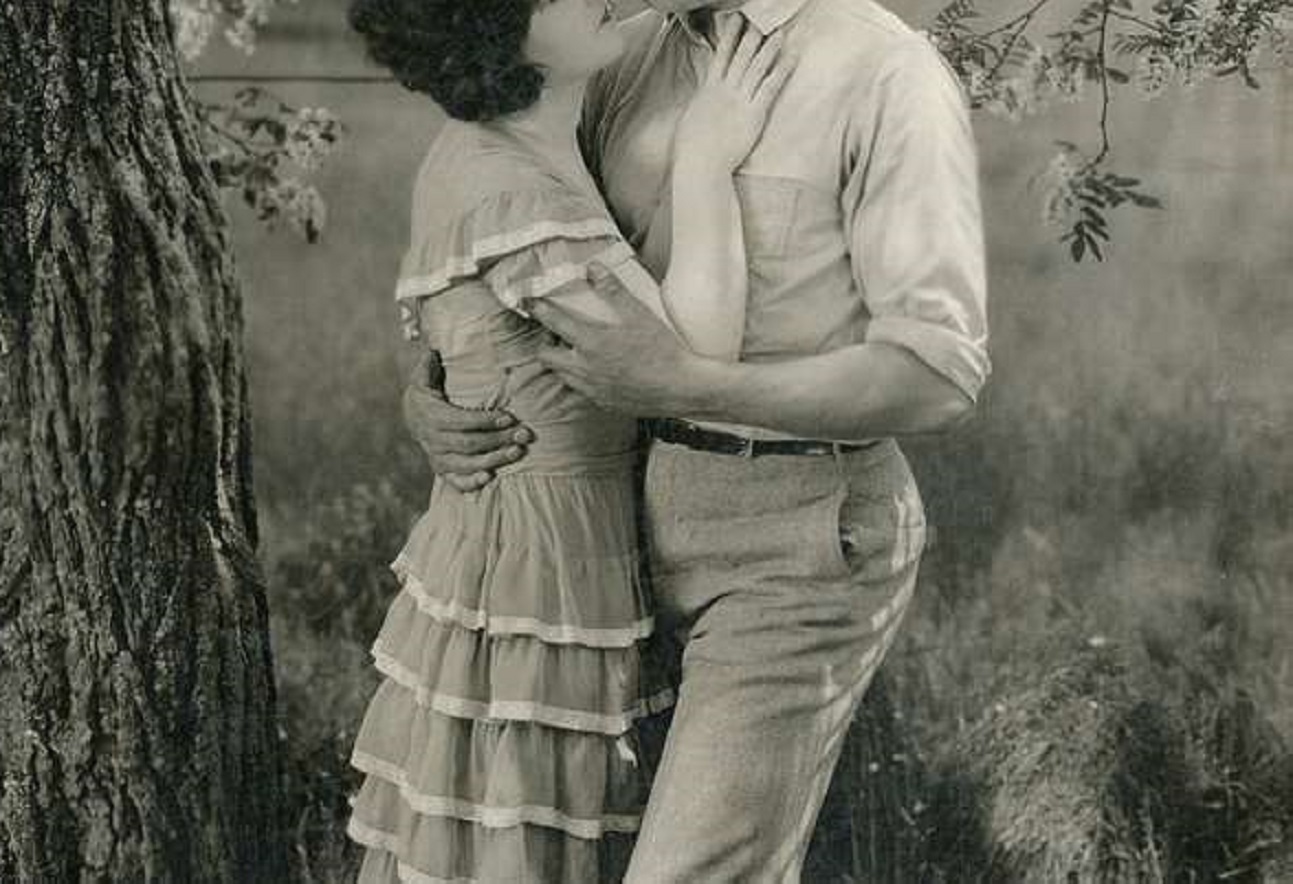 J. Willis Sayre, Picryl
J. Willis Sayre, Picryl
21. They Made Powerful Friends
It’s not just that their financial troubles were over. Becoming the world-famous “Dr. Seuss” opened doors that are closed to most people. He and his wife started rubbing shoulders with New York’s upper crust, particularly becoming close friends with the incredibly rich and powerful Vanderlip banking family.
But while they were doing well, neither of them had any clue what real success was just yet. That was coming.
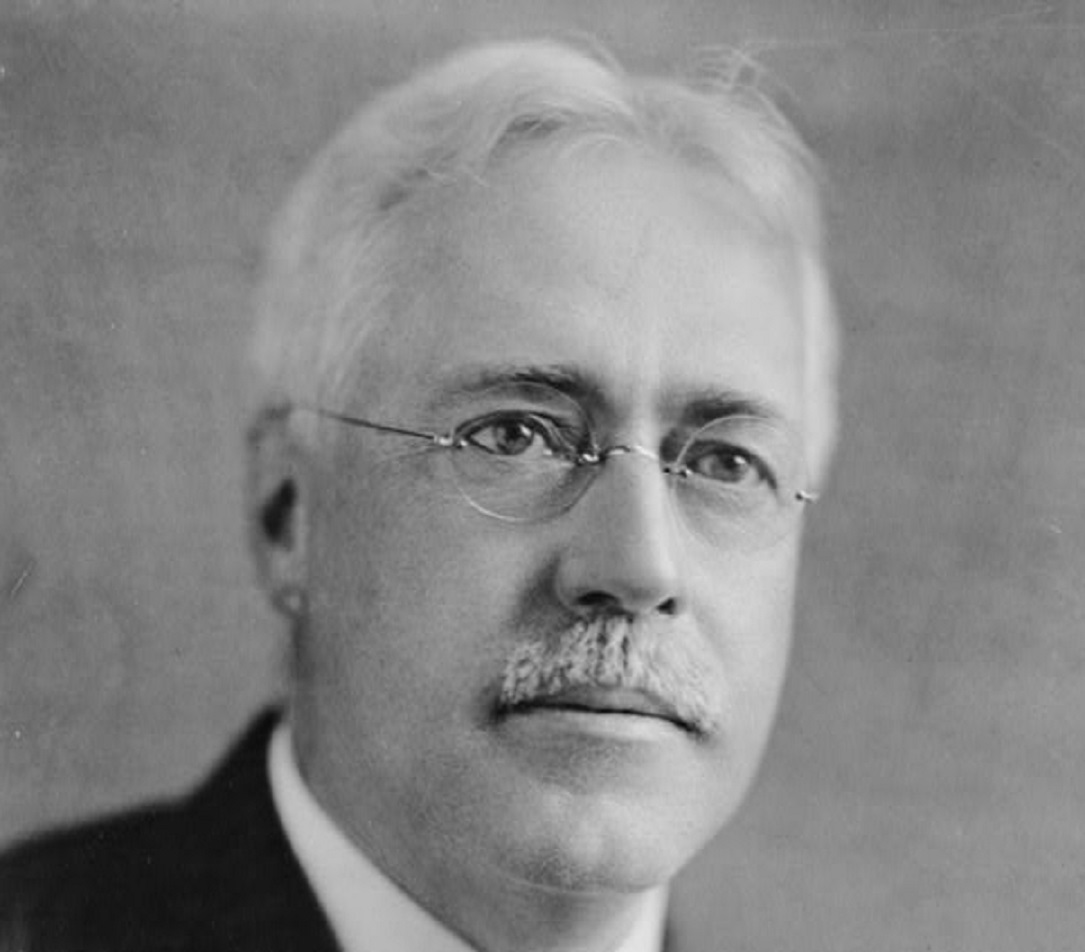 Harris & Ewing, Wikimedia Commons
Harris & Ewing, Wikimedia Commons
22. His First Book Is Called Boners
Even today, everyone knows the name Dr. Seuss—and not for bug spray ads. Sooner or later, Dr. Seuss was going to have to start writing books. But there’s a good chance you haven’t heard of his first book: It’s called Boners.
Maybe it didn’t become an instant classic, but it did become a best seller. So did the sequel. But it was the next book that finally clicked for real.
23. He Went Back To Basics
Thinking back to what Helen first saw in him to begin with, Seuss came up with an idea for a new book featuring “very strange animals”. There was just one problem. This book was fictional. Boners had been non-fiction. Apparently, that was too much of a hurdle for publishers.
Despite the fame and success the preceded him, Seuss couldn’t convince anyone to take a chance on his strange animals. But he wasn’t going to give up.
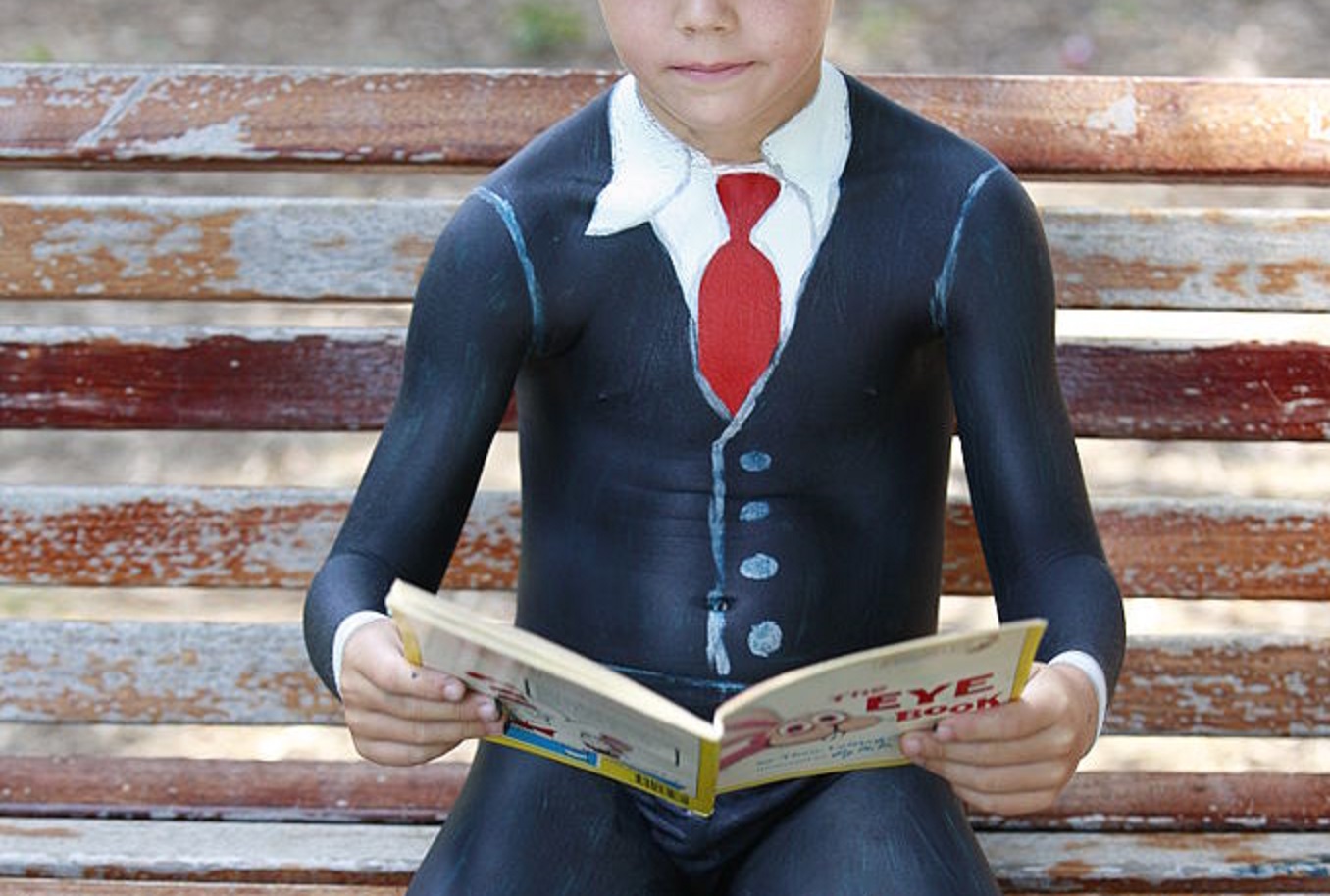 Eva Rinaldi, CC BY-SA 2.0, Wikimedia Commons
Eva Rinaldi, CC BY-SA 2.0, Wikimedia Commons
24. Nobody Wanted It
Writers have to be good at handling rejection—even successful writers like Dr. Seuss could tell you that. Depending on when he told the story, his third book received anywhere between 20 and 43 rejections from publishers.
That’s 20-43 publishers who all made a terrible decision
25. He Got The Chance He Needed
If at first you don’t succeed, try, try again—maybe you’ll get lucky! One day in 1937, Seuss happened to bump into an old classmate from his days at Dartmouth. And what did that school chum happen to do for a living! He was an editor at Vanguard Press.
After rejection after rejection, Seuss finally found someone to publish his book. He named it after the street near where he grew up: To Think I Saw It On Mulberry Street. It became an instant classic.
 Flickr, Presidio of Monterey
Flickr, Presidio of Monterey
26. He Became An Author
Dr. Seuss says he was ready to give up if he couldn’t get Mulberry Street published, but the chance encounter with his old friend saved his career. He quickly published four more books. It looked like he was finally going to be a successful author, just like Helen had always envisioned.
But there was one thing they didn’t count on.
27. He Got Political
When WWII broke out, Dr. Seuss put his career on the backburner and devoted his efforts to political cartoons, drawing over 400 in two years. In these cartoons, he denounced the Axis leaders and criticized isolationists like Charles Lindbergh who opposed the US joining the war.
Those cartoons largely hold up today. His cartoons about Japanese Americans? Not so much.
 Picryl
Picryl
28. He Targeted Japanese Americans
Some of Dr. Seuss’s cartoons denounced racism, as prejudice against Jewish and Black Americans would hurt the war effort. Unfortunately, that tolerance didn’t extend to all Americans. One of Dr. Seuss’s WWII cartoons featured caricatured Japanese Americans being handed explosives and told to wait for a “signal from home”.
The message was clear: Your Japanese American neighbors can’t be trusted. But Seuss didn’t stop there.
29. He Joined The Fight (In His Ways)
Before the US entered WWII, Dr. Seuss was just a concerned citizen. In 1942, he started supporting the war effort directly. He enlisted, but he wasn’t heading to the front lines; Seuss became the commander of the Army’s First Motion Picture Unit’s animation department.
And once again, Seuss set his sights on the Japanese. Senior Airman Hrair Palyan, Wikimedia Commons
Senior Airman Hrair Palyan, Wikimedia Commons
30. His Story Won An Oscar
Dr. Seuss eventually earned the Legion of Merit for the films he made during WWII. The most notable was Our Job in Japan, which after the war was expanded into the Oscar-winning documentary Design for Death.
The film made perfect sense in the context of WWII. After WWII? Well, that’s a little more complicated.
 Flickr, lili chin
Flickr, lili chin
31. He Tried To Turn People Against Japan
While Dr. Seuss was working directly for the war effort, propaganda was the name of the game. Our Job in Japan was a slanted description of Japanese culture, designed to teach American soldiers that their Japanese enemies were vicious, would never stop, and had to be defeated at all costs.
The story must have connect with people, for it to be expanded into an Oscar-winning film. But by then, WWII had ended, and Dr. Seuss was preparing for a huge change in his life. Dr. Seuss, Wikimedia Commons
Dr. Seuss, Wikimedia Commons
32. He Moved To Sunny California
Maybe WWII made Seuss want a little sunshine in his life, because soon after it ended, he and his wife packed up and moved to beautiful La Jolla, California. Maybe Helen thought that this was going to be a fresh new start for them.
Sadly, it was the beginning of the end.  public-domain-image.com, Picryl
public-domain-image.com, Picryl
33. He Made A Movie
Dr. Seuss made movies during WWII, so now that it was back to civilian life, he tried his hand at making one for general audiences. The final product was The 5,000 Fingers of Dr. T. and it looks…exactly how you’d expect a Dr. Seuss movie to look.
Unfortunately, in 1953, that was a bad thing.
 The 5, 000 Fingers of Dr. T. (1953), Columbia Pictures
The 5, 000 Fingers of Dr. T. (1953), Columbia Pictures
34. It Was A Total Flop
America wasn’t ready for the surreal imagery of The 5,000 Fingers of Dr. T., and the film was both a critical and financial disaster. It was so bad that Dr. Seuss never made another movie again (but the whole thing is on YouTube today for anyone who wants to watch it).
But while the movies didn’t really work out, his books were doing better than ever.
35. He Was Very Productive In The 50s
Dr. Seuss wrote many of his most famous books in the 1950s, including If I Ran the Zoo, Horton Hears a Who, and How the Grinch Stole Christmas! But there was one book in particular that really sent Dr. Seuss into the stratosphere.
 Flickr,justgrimes
Flickr,justgrimes
36. His Publisher Was Worried About Kids
A 1954 Life magazine report on illiteracy came to the conclusion that children weren’t learning to read because their books were too boring. An executive at Dr. Seuss’s publisher saw this report, so he gave Seuss a challenge. He compiled a list of 250 words he thought all first-graders should know.
Then he told Dr. Seuss to write a book using only those words. I doubt even he realized it yet, but he was creating a sensation. MART PRODUCTION, Pexels
MART PRODUCTION, Pexels
37. He Tried His Best
Dr. Seuss did his best, but he didn’t quite manage to do what his publisher asked. He made the book, but it only used 236 of the 250 words. Oh well, that was good enough. The book was The Cat in the Hat, and it turned Dr. Seuss from a success story into a legend.
38. He Revolutionized Books For Young Children
Dr. Seuss’s imaginative art and writing made the perfect combination with his publisher’s simple language, and The Cat in the Hat remains one of the most popular early-reader books in the world. For instance, it sold 452,000 copies…in 2009 alone. That’s over 50 years after its publication.
His followup educational books, Green Eggs and Ham and One Fish, Two Fish, Red Fish, Blue Fish only built on this success. But as his success was peaking, his marriage was crumbling.
39. His Wife Fell Ill
Helen Geisel, even while shepherding her husband through his rise to glory, started feeling ill around the time of The Cat in the Hat’s publication. The years began to pass, and for some reason,, she simply couldn’t seem to get better. She persevered for years—until 1967, when tragedy struck.
40. She Took Her Own Life
Helen Geisel took her own life in 1967. Anyone who knew of her illness might have thought that it was the cause—but the truth is so much darker. She left her husband a note which offers insight into her pain:
“Dear Ted, What has happened to us? I don't know. I feel myself in a spiral, going down down down, into a black hole from which there is no escape, no brightness. And loud in my ears from every side I hear, 'failure, failure, failure...' I love you so much ... I am too old and enmeshed in everything you do and are, that I cannot conceive of life without you ... “
If that was all she wrote, it would be devastating enough. But she didn’t stop there…
 spixel, Shutterstock
spixel, Shutterstock
41. Her Death Destroyed Him
No one will be surprised to learn the loss of Helen hit Seuss hard. He later wrote that he considered taking his own life, or burning down their house and starting completely fresh somewhere else. But it wasn’t just heartbreak that hurt Seuss so much.
There was also the guilt over what he did to her. Ivan Samkov, Pexels
Ivan Samkov, Pexels
42. She Left A Hint To The Truth
Helen finished her not with a cryptic message: “My going will leave quite a rumor, but you can say I was overworked and overwrought. Your reputation with your friends and fans will not be harmed ... Sometimes think of the fun we had all thru the years … “
Why did she think her going would leave a rumor? Why was his reputation threatened? Because after she was gone, the truth finally came out. Dương Nhân, Pexels
Dương Nhân, Pexels
43. He Remarried As Soon As Possible
Eight months after Helen’s passing, Dr. Seuss did something shocking: He married Audrey Dimond. If that seems like he’s turning things around a little quickly, well, you don’t know the half of it.  Abi Greer, Pexels
Abi Greer, Pexels
44. Sparks Flew When They Met
Dr. Seuss and his wife first met Audrey Dimond—and her husband—at a party in La Jolla. From the first moment they met, when Audrey made a facetious joke, Dr. Seuss became infatuated with her. His wife, after all, had been ill for a long time…
Lucky for him, Audrey felt the same way. Nancy Palmieri, Wikimedia Commons
Nancy Palmieri, Wikimedia Commons
45. They Had A Courthouse Wedding In Reno
Seuss and Audrey wasted little time making their relationship official after Helen’s suicide. Audrey divorced her husband, they waited the requisite six weeks, then married at the Washoe County Courthouse in Reno, Nevada.
It was a tough look, but would any of Seuss’s friends understand?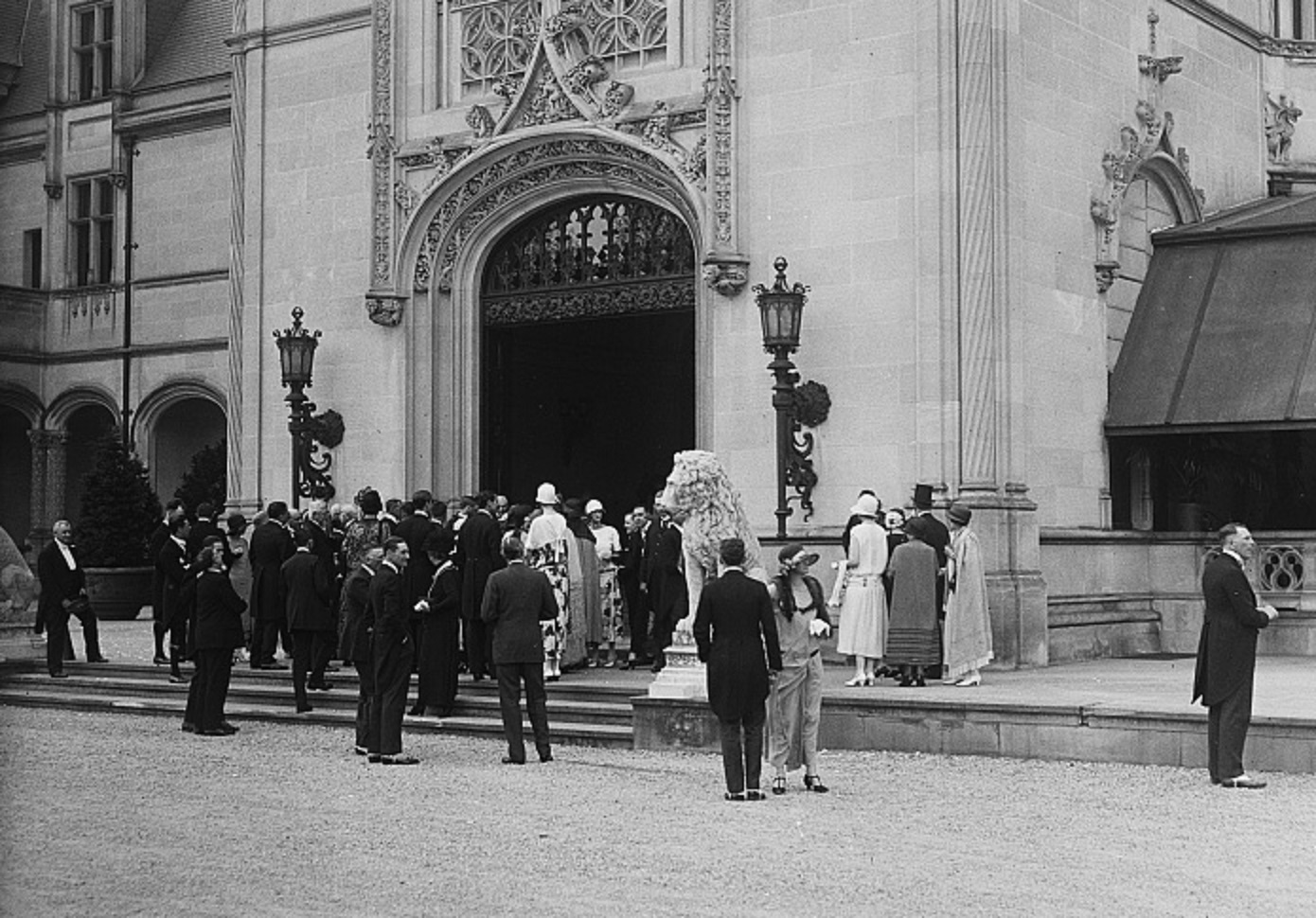 Library of Congress ,Picryl
Library of Congress ,Picryl
46. He Asked His Friends For Understanding
Dr. Seuss knew very well what it looked like, marrying his wife’s friend so soon after she took he own life. He wrote to his friends and begged for their understanding:
“I am 64 years old. I am marrying a woman eighteen years younger… I have not flipped my lid. This is not a sudden nutty decision… This is an inevitable, inescapable conclusion […] All I can ask you is to try to believe in me”.
Important note: Seuss and Audrey did not invite a single friend to their wedding.
47. She Abandoned Her Life For Him
If you think Dr. Seuss marrying Audrey was problematic, you don’t even know the half of it. Audrey essentially abandoned her entire life to be with him. She had two daughters, but after she married Seuss, she immediately shipped them both off to boarding school.
As she put it, "They wouldn't have been happy with Ted, and Ted wouldn't have been happy with them”. Whatever you say… Emma Bauso, Pexels
Emma Bauso, Pexels
48. His First Wife Gave Him A Chilling "Gift"
The only ray of light in this incredibly dark story is that Seuss and Audrey remained happily married for the rest of his life. Even if it looks bad, it seems that Audrey gave him something that Helen couldn’t. Someone close to them even called her suicide "her last and greatest gift to him".
Does that make up for cheating on his ailing wife, making her take her own life? At the risk of editorializing: No. It doesn’t.  Ion Chibzii, CC BY-SA 2.0, Wikimedia Commons
Ion Chibzii, CC BY-SA 2.0, Wikimedia Commons
49. Seuss Stayed With Audrey Until The End
With the 18-year age gap between them, Audrey became Dr. Seuss’s caretaker as his body started to fail him—especially when glaucoma started robbing him of his sight. The couple remained together until 1991, when cancer finally claimed Dr. Seuss’s life.
50. We're All Saying His Name Wrong
Dr. Seuss’s fantastical stories are beloved the world over, so it’s easy to understand why this incredibly dark chapter of his life has mostly been erased. But there’s another part of his story that don’t know about: How to say his name.
Turns out, we’ve been saying it wrong this whole time. According to the man himself, “Seuss” rhymes with “Zoice”. And now you know!
 Flickr,Steve Alexander
Flickr,Steve Alexander



